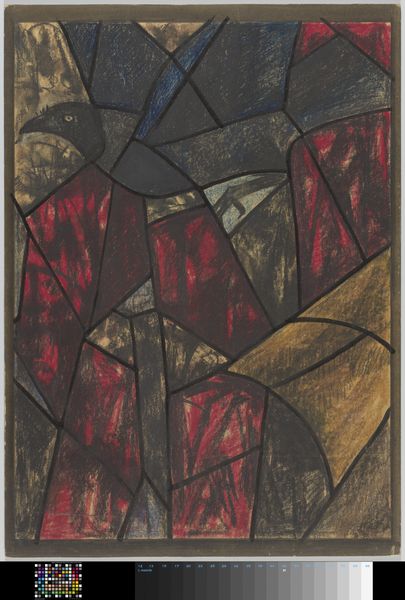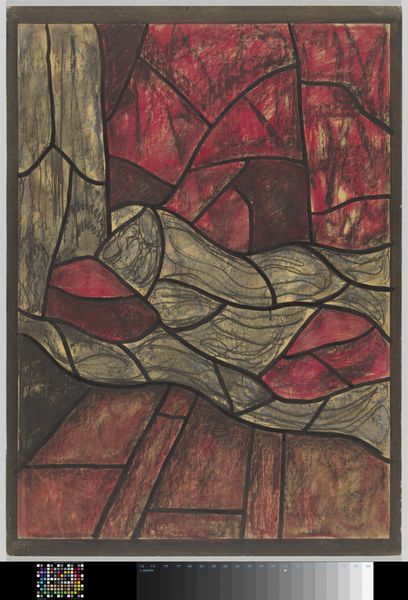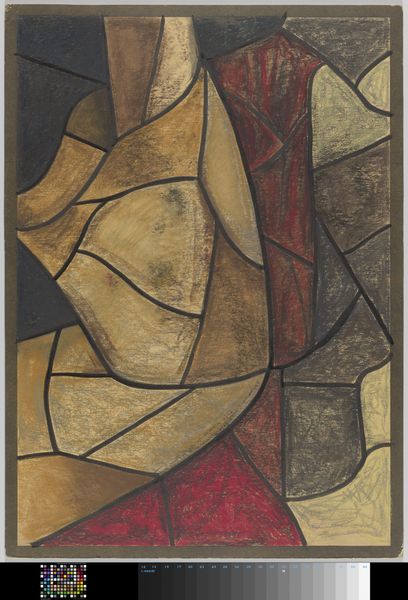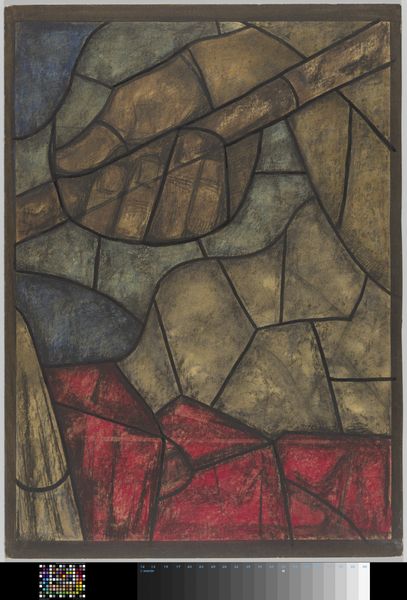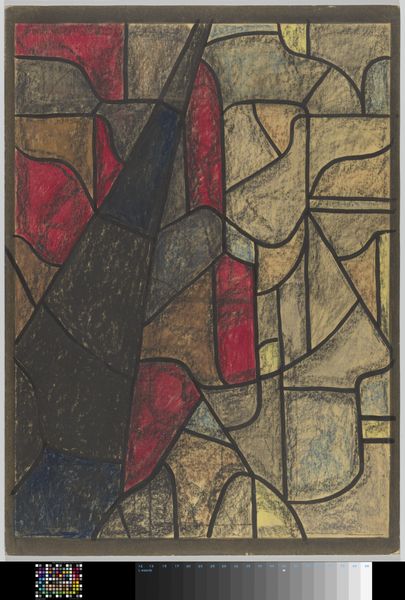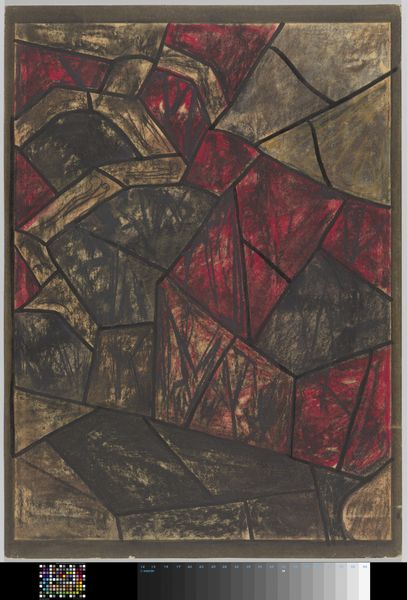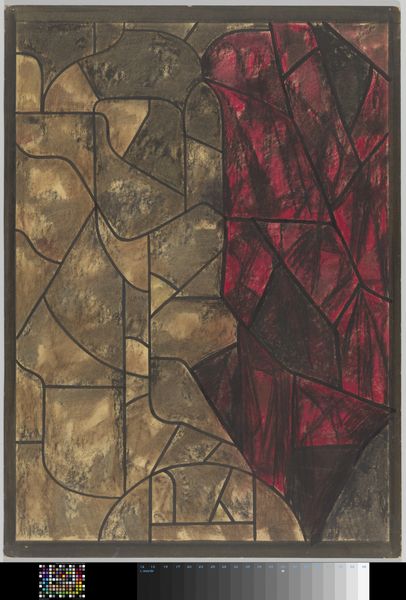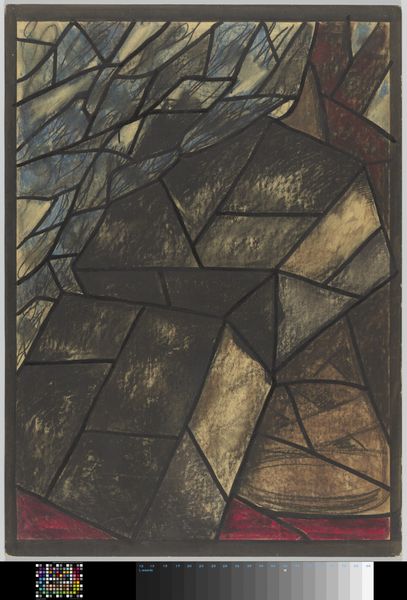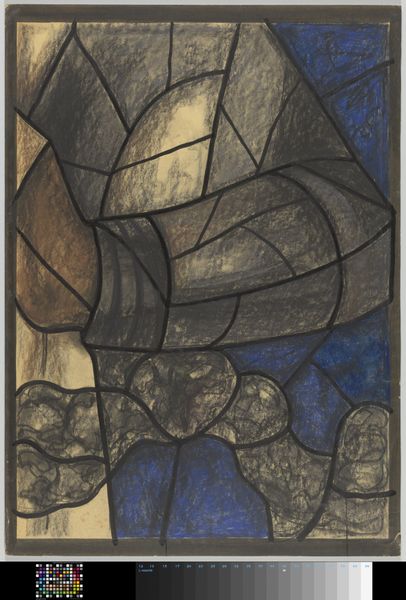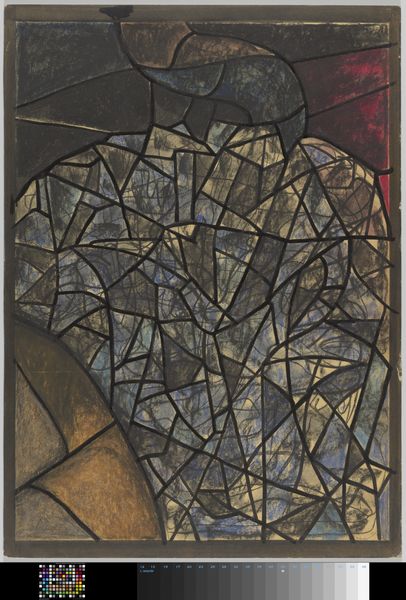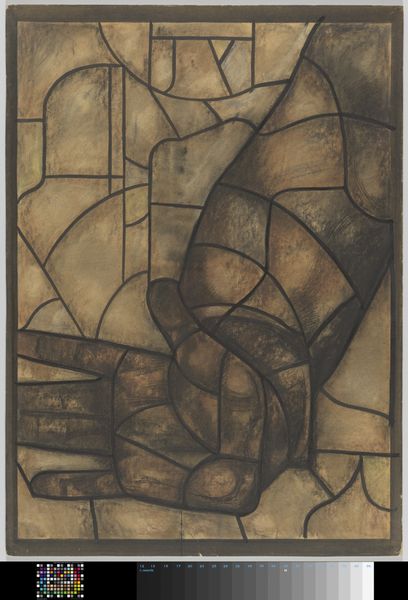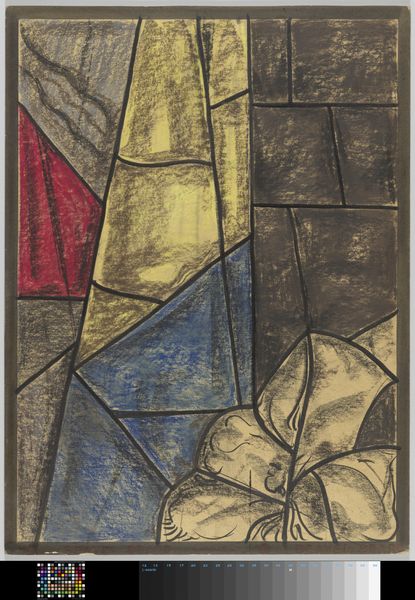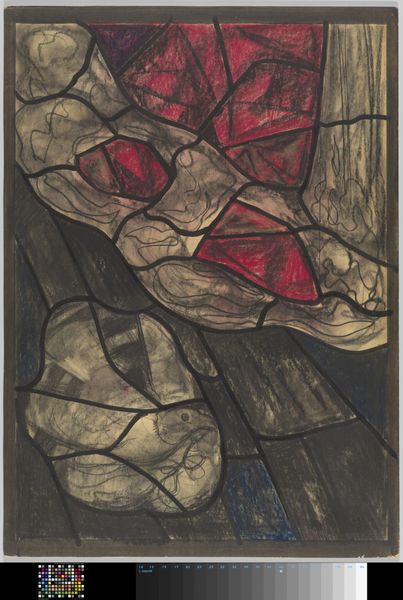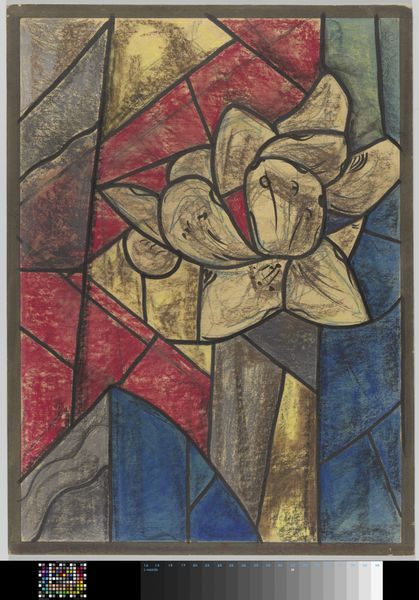
Ontwerp voor raam in het Noordertransept in de Dom te Utrecht c. 1934
0:00
0:00
richardnicolausrolandholst
Rijksmuseum
drawing, stain, paper, mural
#
drawing
#
abstract painting
#
stain
#
paper
#
mural art
#
form
#
handmade artwork painting
#
tile art
#
fluid art
#
geometric
#
geometric-abstraction
#
line
#
mural
Dimensions: height 1123 mm, width 805 mm
Copyright: Rijks Museum: Open Domain
Editor: Here we have Richard Nicolaüs Roland Holst’s "Design for a window in the North Transept of Utrecht Cathedral," created around 1934. It’s a stain drawing on paper, featuring bold red and gold sections delineated by dark lines. There's something simultaneously powerful and reverent about this piece; the abstraction hints at stained glass, but it is also very modern. How do you interpret the cultural context of this work? Curator: Well, this piece is interesting because it sits at the intersection of traditional religious art and modern abstraction. Holst was working at a time when the role of the church, and by extension religious art, was being heavily debated in the public sphere. Do you notice how the design still clings to geometric form reminiscent of medieval stained glass, while the color choices— the fiery reds and earthy golds– evoke a sense of spiritual fervor, that also could reflect social struggles and transformations in the Netherlands during the 1930s? Editor: That's a good point about social transformations and religion. The stained glass windows that often told bible stories become an abstract composition; It seems like a statement about how art could address cultural issues through public imagery in the 1930s, beyond just religious narrative. Do you think his specific choice of colors or geometrical designs may carry other symbolic weights? Curator: Absolutely. Remember, artists aren’t working in a vacuum. The commission itself represents the power and influence the church held, even in the face of a changing world. Holst, being an artist with social-democratic ideals, must have been aware of his responsibility and privilege of creating art for such a significant location. The choice to move towards abstraction could symbolize questioning old certainties or looking to construct new ideals reflecting social ideas, while still fitting in a very important local institution. It highlights the complex dance between art, public expectation, and socio-political climate. Editor: That’s fascinating, I never really considered that his political standing may influenced it, it really helps to tie different threads together to grasp its deeper message. It feels like seeing it within this context offers such a powerful look into the cultural tensions of the period. Curator: Precisely. Examining the social and historical environment adds so much depth to understanding what an artist aimed to communicate.
Comments
No comments
Be the first to comment and join the conversation on the ultimate creative platform.
